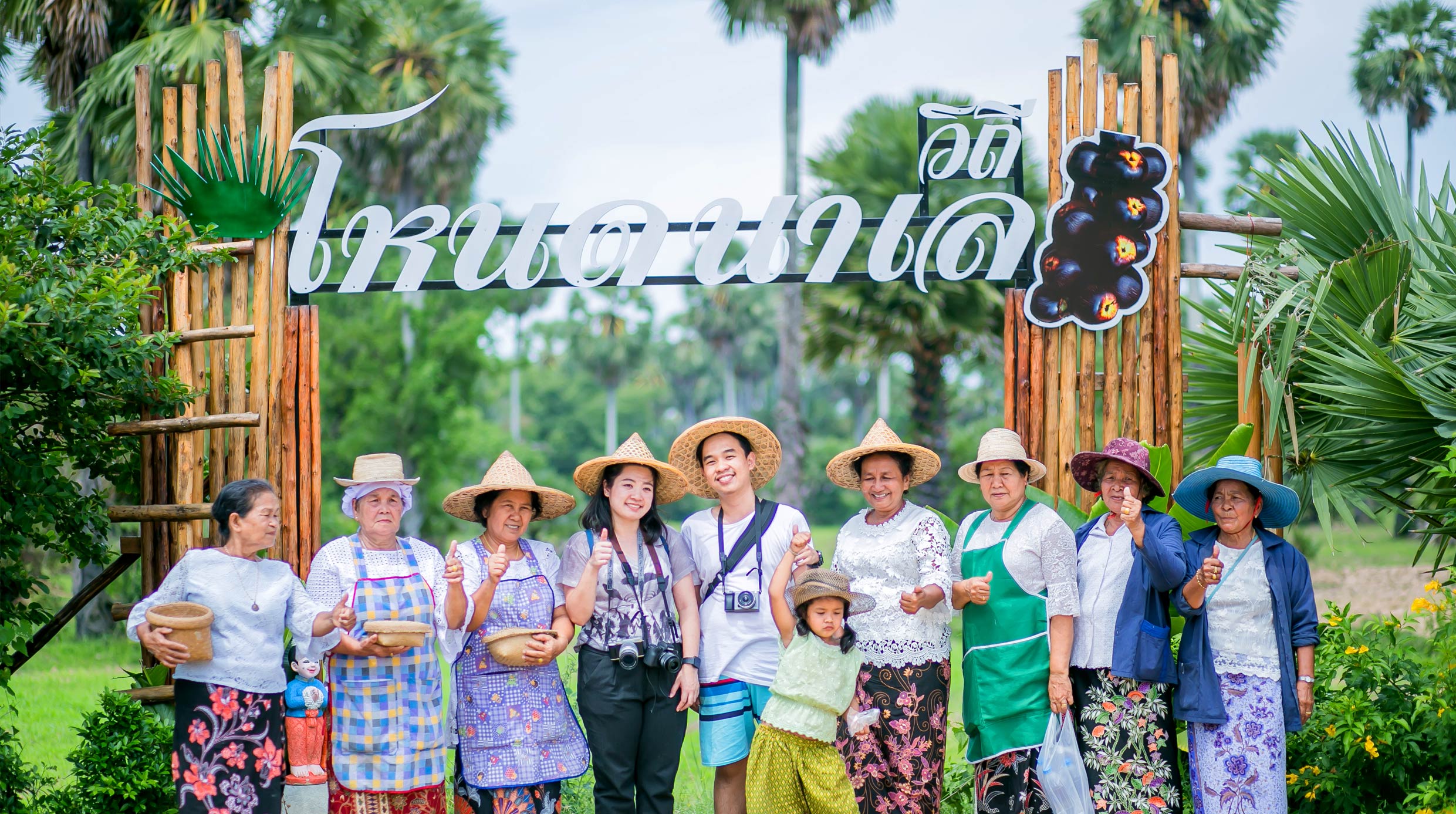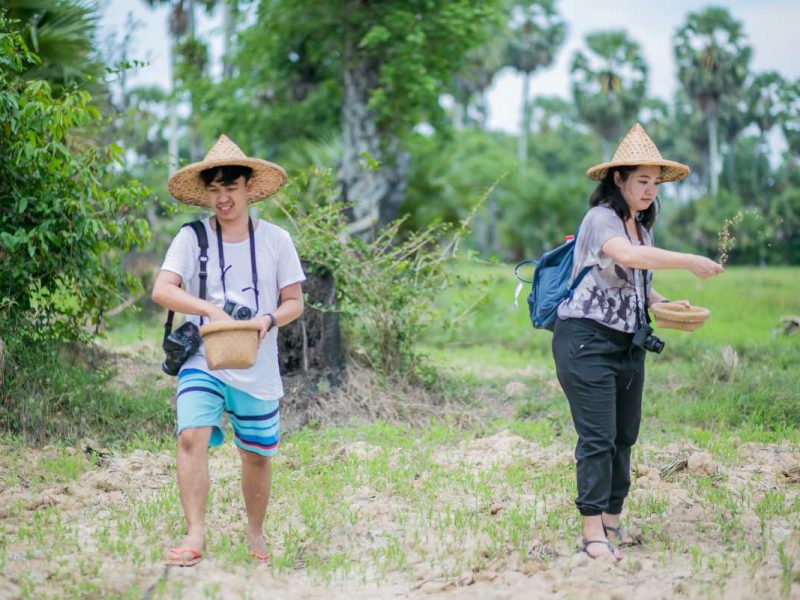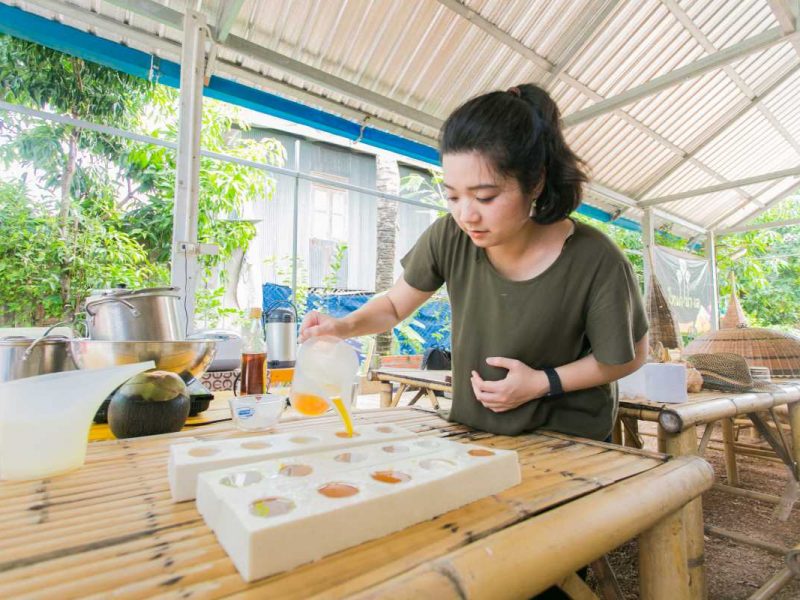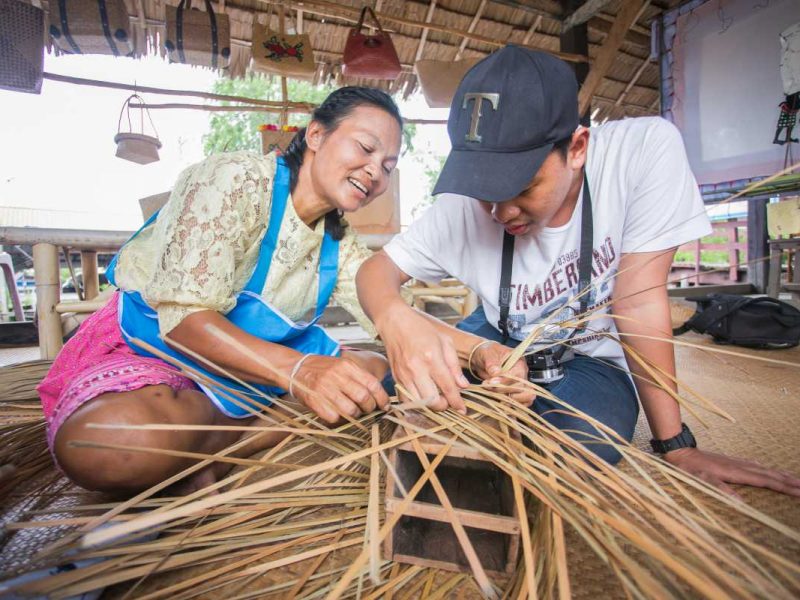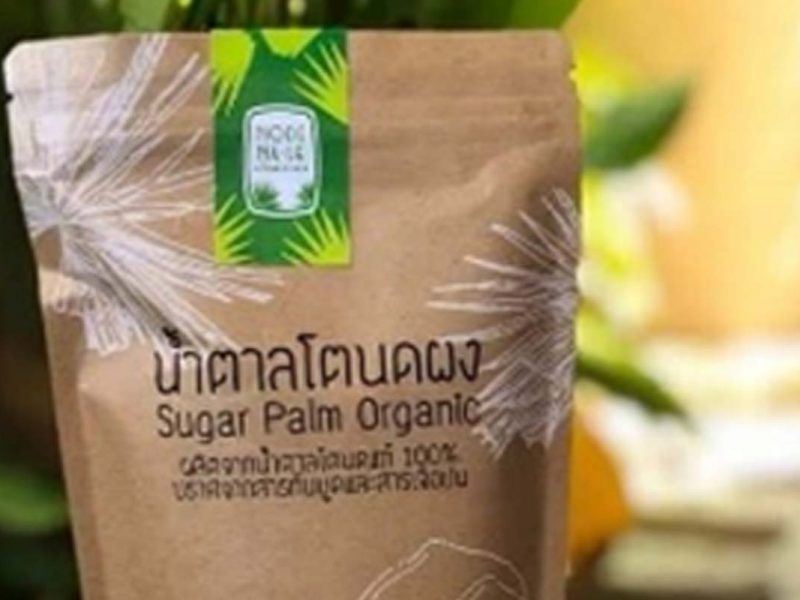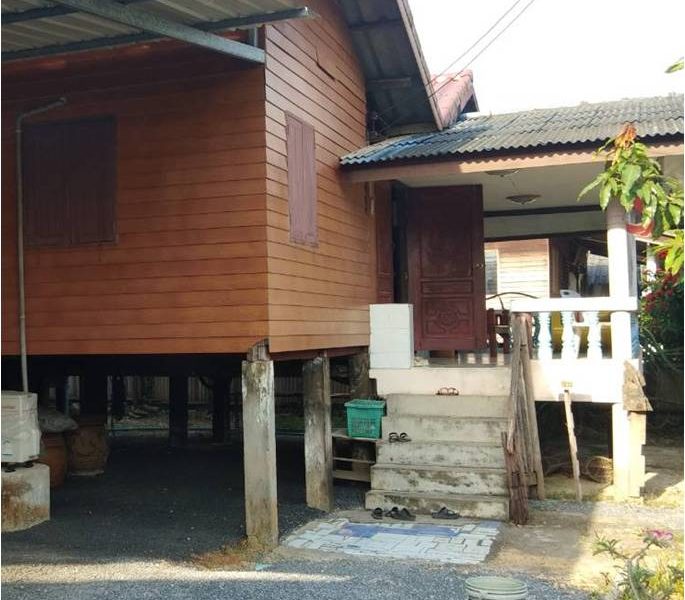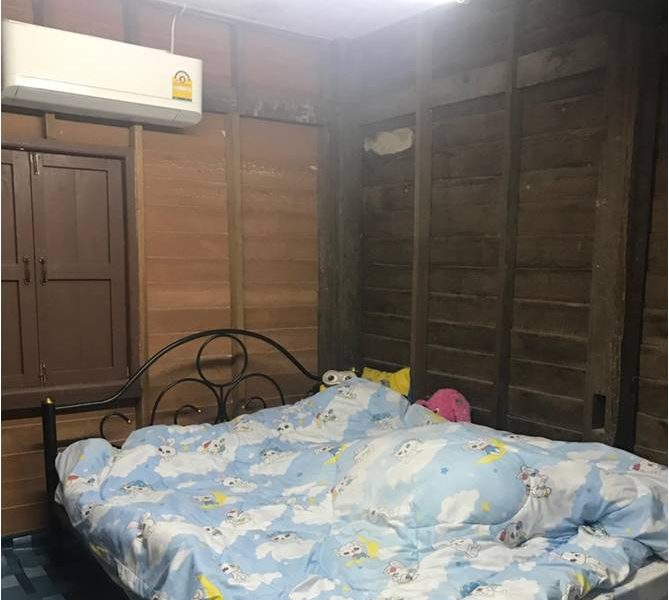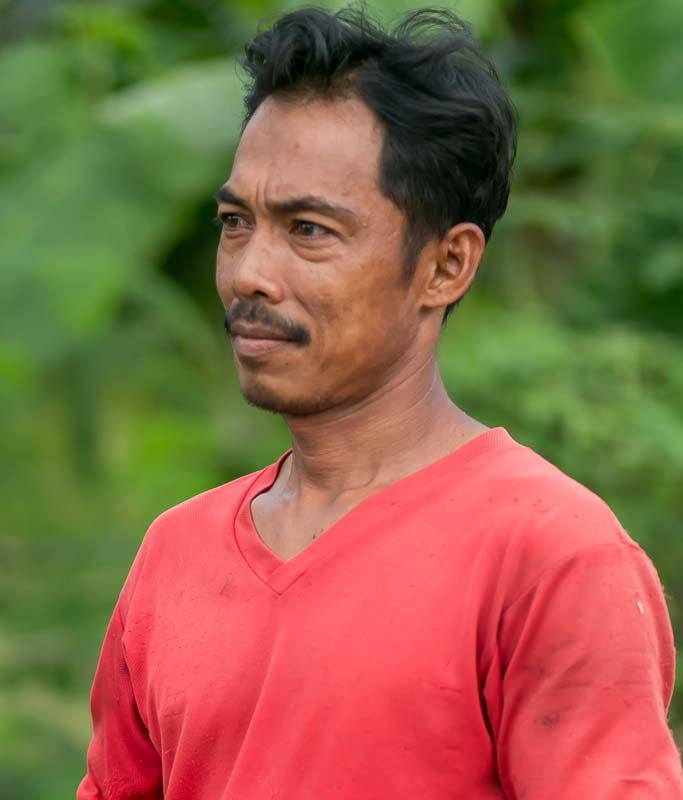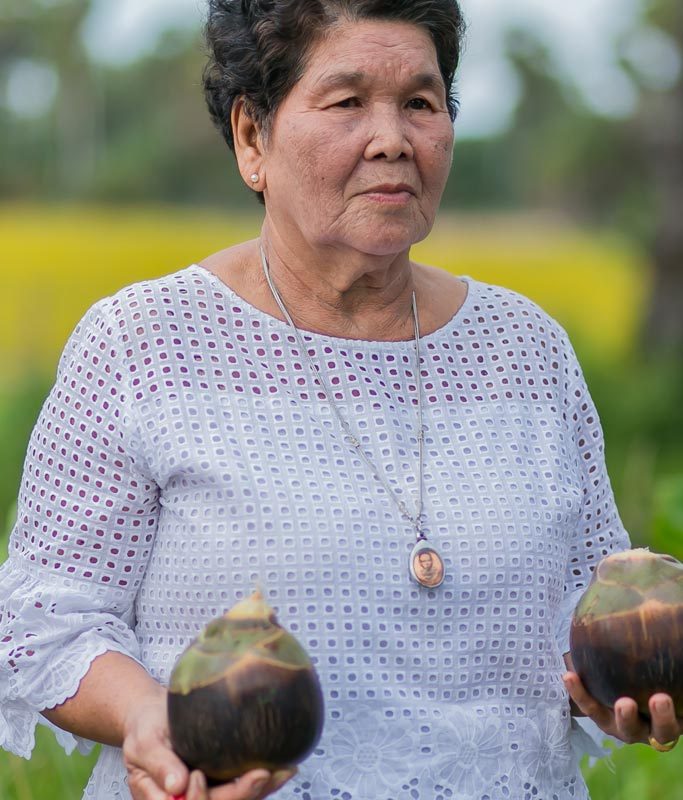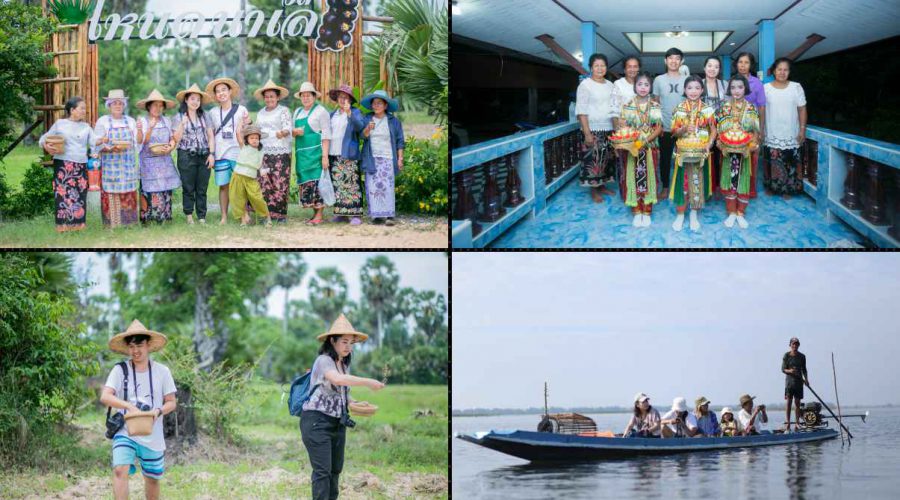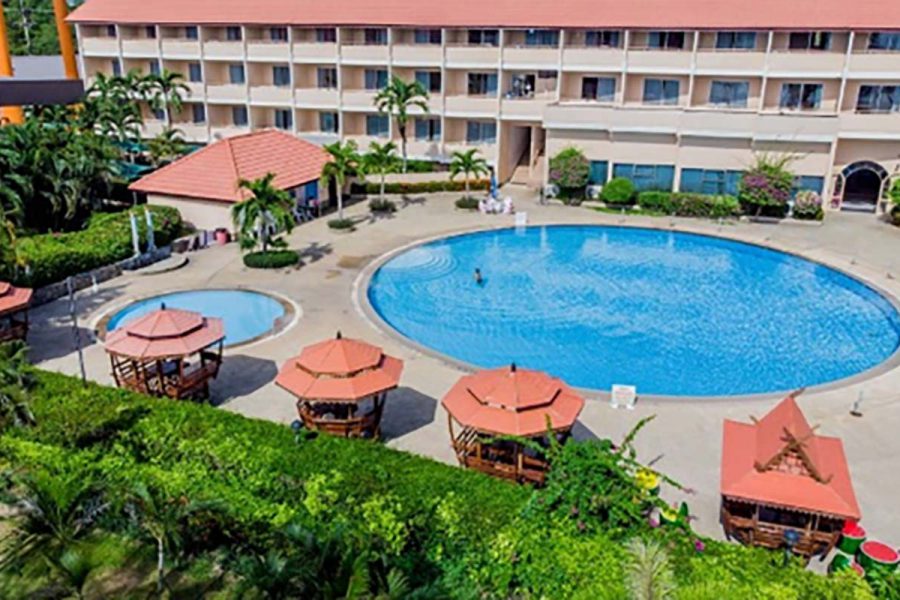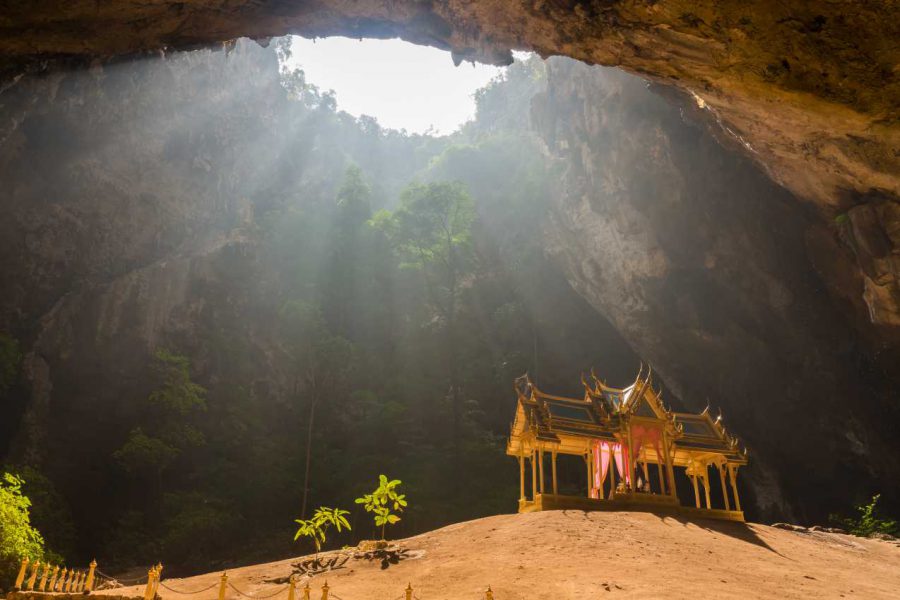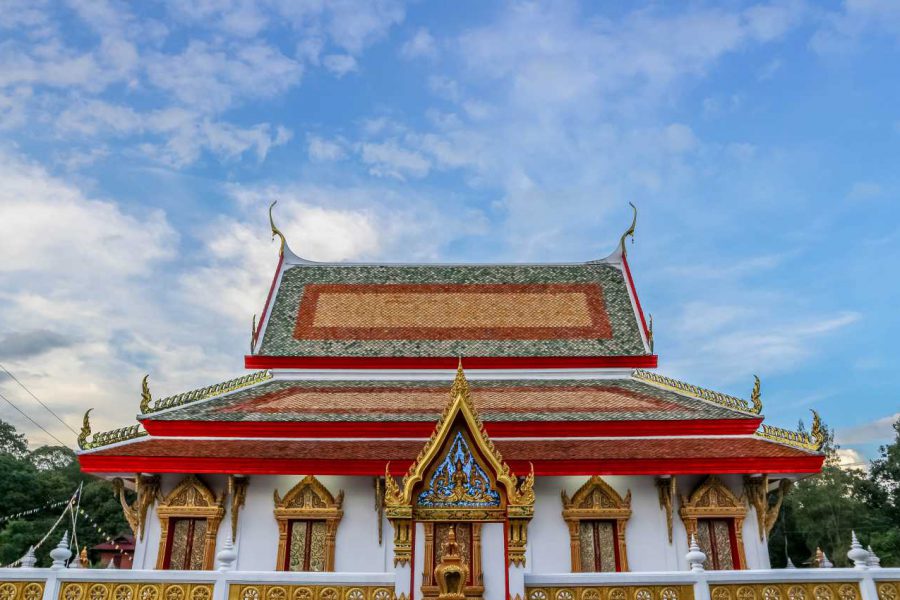| Day 1: Hat Yai Airport – Klong Dan community, “the land of three canals and two towns” (evening) |
| Afternoon |
Pick-up at the airport and head to Klong Dan community. Check-in at the accommodation and spend some time with your community representative.
- Pay respect to Venerable Father Chum, Venerable Father Prom, the Golden Buddha, Pra Yai Ad, for good luck. Browse through Klong Dan riverside market as you shop local products. Search for some traditional dessert developed from local wisdom, try Norah beading and palm leaf weaving, paint plaster statues, learn about some traditional games – all activities that’ll make you feel as though you have travelled back in time to the days of our grandparents.
|
| 6.00 pm |
Salute the flag and enjoy a dinner at the riverside market. Watch “Ram Pran” Norah show performed on the only wooden bridge in Thailand that connects two provinces. |
| 9.00 pm |
Travel back to the accommodation (homestay) and enjoy leisure time. |
| Day 2: Learn from the living museum – Follow in the footsteps of Luang Pu Tuad of Pako Temple (morning, noon, evening) |
| Morning |
Breakfast at the homestay, greeted by the community representative
- Visit archaeological sites and see the valuable old wooden pavilion.
- Visit and learn from the living museum built by Master Sayan Cholasakorn
- See the ancient boats of Klong Dan and take in the vibe of hundred-year-old houses, including Ban Yai Liab, Ban Yai Ong and Srisukaosot Shop, and learn about the preservation of ancient houses.
|
| Enjoy lunch served in tiffin carriers, including various local dishes cooked by different communities. Pack your bag and leave for Satingpra community, following in the footsteps of the Luang Pu Tuad who supposedly walked on fresh seawater. Pray to the ancient Buddha for merit at Ratchapaditsatan (Pako) Temple, a sacred site built in early-Ayudhaya period. Luang Pu Tuad renovated the temple for life’s blessing to “succeed and advance in one’s career”. |
| Travel to Node Na Le Learning Centre, Tha Hin, Sating Phra, Songkhla where you will be warmly welcomed by the director of the centre. Check in at the homestay. |
| Evening |
Walk around the village. Enjoy dinner comprised of local dishes like hua Node curry, palm seed spicy salad, palm flesh in coconut juice. Leisure time before bed. |
| Day 3: Follow in the footsteps of Luang Pu Tuad – Node Na Le Tahin life (morning, noon, evening) |
| Morning |
Breakfast at the homestay. Hop on a “trolley motorcycle”.
- Admire stupa in Ton Liab Temple, where the placenta from Luang Pu Tuad’s birth is buried. Locals believe that this brings good fortune and provides a “firm foundation” for your life.
- Next, it’s on to see the stupa of Abbot Juang, Venerable Father Yim, and the chapel of Dee Luang Temple where Luang Pu Tuad’s ordination was arranged. It is also the place where he studied as a youth. This is thought to bring “good fortune, wisdom and academic success”.
Lunch at Ban Suan Chan market
- Visit the palm tree-lined road and palm bridge, where you get to see the hometown of Luang Pu Tuad.
- Kao Kuha-Tra Pang Pra Cave, a 1,200-year-old ancient cave. Another site believed to bring about “good fortune and a healthy family life”.
|
| 3.00 pm |
Learn about the “Node” life: Watch the tree climbers as well as the powdered and sliced palm sugar processing. |
| Evening |
Prepare dinner and enjoy it with your homestay host. Leisure time for the rest of the evening. |
| Day 4: The “Node” life (continued) (morning, noon, evening) |
| Morning |
Prepare and enjoy breakfast together at the homestay. |
| 9.00 am |
Continue learning about the “Node” way of life. Try breaking the palm fruit, making soap, basketry products and traditional dessert (palm cake, coconut milk waffle and grilled cake) |
| Noon |
Lunch |
| Afternoon |
Learn the “Na” life: Learn about different farming processes. See the rice pounding and threshing demonstration and learn about the biological gas and sufficiency economy. |
| Evening |
Prepare dinner with the host. Next, you’ll head out on a boat to learn about the “Le” (farming) way of life by laying down fishing nets. |
| Night |
Spend the night on the water as part of the fishing activity or travel back to the homestay. |
| Day 5: Learn the “Le” life (continued) (morning, noon, evening) |
| Morning |
Prepare and enjoy breakfast at the homestay. Travel on board the boat to continue leaning the Le life, including retrieving the net, lifting the net cages to catch shrimp, plotosus and snakehead fish. Enjoy the view of Songkhla lake with wild birds and buffaloes. |
| Picnic lunch on Bantom Island, a small island not too far from Nang Kam island. |
| Afternoon |
Return to the homestay. |
| Evening |
Prepare dinner and eat at the homestay. Leisure time. |
| Day 6: Morning market – Boyang, Songkhla’s old town quarter (morning, noon, evening) |
| Morning |
Visit the market to get a taste of the authentic way of life in the morning. Here, you can shop for breakfast and local snacks. |
| Pack your bag and head to Songkhla, with the journey taking just a matter of minutes. |
| Late morning |
Arrive in Songkhla town where you will visit the National Museum, and pay respect to the relics at the Great Pagoda of Tang Kuan. |
| 12.00 pm |
Enjoy a seafood lunch at a local restaurant. Stroll along Samila Beach. |
| 1.30 pm |
Hop on the sightseeing tram at Tammarong Museum meeting point to begin a journey to the old town on Nakornnai road and Nang-ngam road. This was the area where Chinese people came to trade in the past when Songkhla was still a prosperous port city. Other sights include the City Pillar Shrine, Chalatat beach, the statue of the Great Naga’s tail, the 14 statues, the Great Naga’s belly button, and the water-spraying Great Naga at Suan Song Talay. |
| 3.00 pm |
Visit Kao Noi to admire the view of the city. Kao Noi is located near Samila Cape and has an asphalt road built up to the top. |
| 6.00 pm |
Dinner. Arrive at Lake Inn Hotel in the old town quarter. |
| Day 7: Boyang, Songkhla’s old town quarter (continued) (morning, noon) |
| Morning |
Breakfast at the hotel. Check out and head to the Red Mill, an old rice mill painted entirely in red. Formerly known as Hub Hohin, it was once used as the mill for the entire Songkhla Lake basin area. Apart from serving Songkhla, rice from here was also sold in Ipoh, Perak, (Malaysia). Listen to the history about how “Songkhla was the city that founded the country”.
- Admire the beautifully created wall art in the old town, which represents the lifestyle of the original Songkhla community. Visit the area aroung Nakornnok road, Nakornnai road and Nang-ngam road, where Chinese traded in the past when Songkhla was still a prosperous port city. See the houses that feature a mixed architectural style of Chinese and western influences, known today as Chino-European style.
- Visit Ban Nakornnai, an ancient house renovated with a modern touch with a hint of ancient Chinese culture.
- Klang Temple, the City Pillar Shrine and the mosque upstream, which reflect the multicultural coexistence of Thai-Buddhism, Thai-Muslim and Thai-Chinese cultures)
Lunch in the old quarter before heading to Hat Yai airport. |



